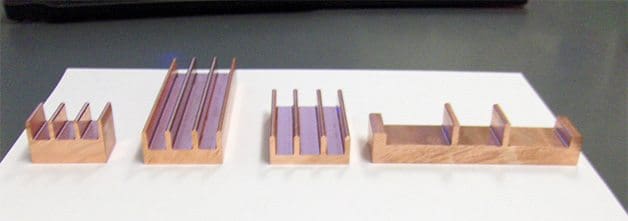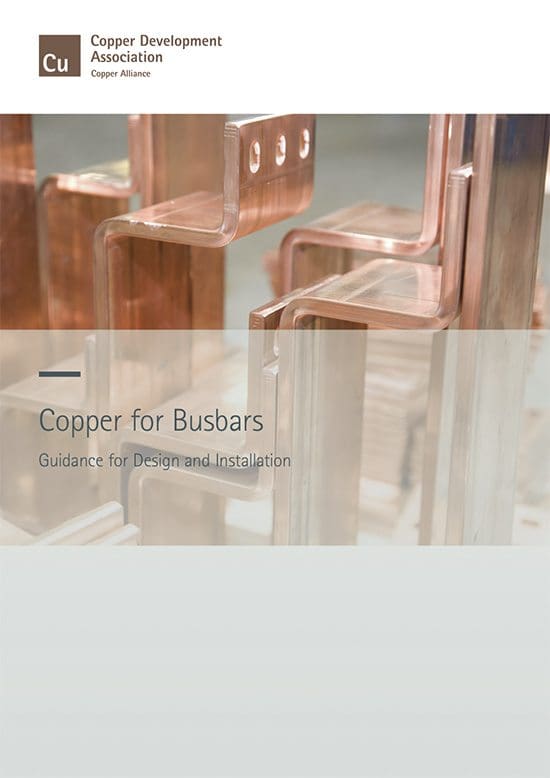About this Guide
Busbars are used within electrical installations for distributing power from a supply point to a number of output circuits. They may be used in a variety of configurations ranging from vertical risers, carrying current to each floor of a multi-storey building, to bars used entirely within a distribution panel or within an industrial process.

The issues that need to be addressed in the design of busbar systems are:
- Temperature rise due to energy losses
- Energy efficiency and lifetime cost
- Short-circuit current stresses and protection
- Jointing methods and performance
- Maintenance.
This book provides the information needed to design efficient, economic and reliable busbar systems.
For busbar systems, the maximum working current is determined primarily by the maximum tolerable working temperature, which is, in turn, determined by considerations such as safety, the retention of mechanical properties of the conductor, compatibility with mounting structures and cable connections.
Section ‘2.0 Current-Carrying Capacity of Busbars’ discusses how to estimate the working current and temperature.
A higher working temperature means that energy is being wasted. Designing for lower energy loss requires the use of more conductor material but results in more reliable operation due to the lower working temperature and, because the cost of lifetime energy losses is far greater than the cost of first installation, lower lifetime costs.
The process of assessing the life cycle cost of a busbar system is described in section ‘3.0 Life Cycle Costing’. Because of the large currents involved, short circuit protection of busbar systems needs careful consideration.
The design of the mounting system is an important factor and one that is becoming more important with the increase in harmonic currents, which can trigger mechanical resonances in the busbar. Section ‘4.0 Short-Circuit Effects’ discusses these issues.
It is usually necessary to joint busbars on site during installation and this is most easily accomplished by bolting bars together or by welding.

For long and reliable service, joints need to be carefully made with controlled torque applied to correctly sized bolts. A properly designed and implemented joint can have a resistance lower than that of the same length of plain bar. The design of efficient joints is discussed in section ‘6.0 Jointing’.
The remainder of this Introduction presents reference material giving mechanical and electrical properties of copper that are required for design purposes.
| Title: | Copper for Busbars – Guidance for Design and Installation – Copper Development Association (copperalliance.org.uk) |
| Format: | |
| Size: | 6.0 MB |
| Pages: | 108 |
| Download: | Right here | Video Courses | Membership | Download Updates |



how to design copper busbar
My query is in regard to dissimilar material of grounding copper bus bar and galvanized bolts used to fasten the copper bus bar inside MV switchgear. My question is it allowed for dissimilar metals to be together, specifically bare copper grounding bus bar and galvanize bolts? and also bare copper MV switchgear terminal to galvanize bolts?
Please provide the calculation spread sheets for designing HVAC,PLUMBING and Fire fighting services for the any projects
Please i need a help on how to download the articles
I can’t download..
Excellent guide. Just to complement, I would like to mention about some IEEE & UL Standards to be used to perform the type tests for bus bars inside of Medium Voltage Switchgears:
IEEE Std. C37.20.2-1999 “IEEE Standard for Metal-Clad Switchgear”
UL 347 Underwriters Laboratories Inc. Fifth Edition for “Medium-Voltage AC Contactors, Controllers, and Control Centers”
It’s very useful to understand correct sizing of the components.
please guide us for hazardous area electrical equipment selection and maitenance